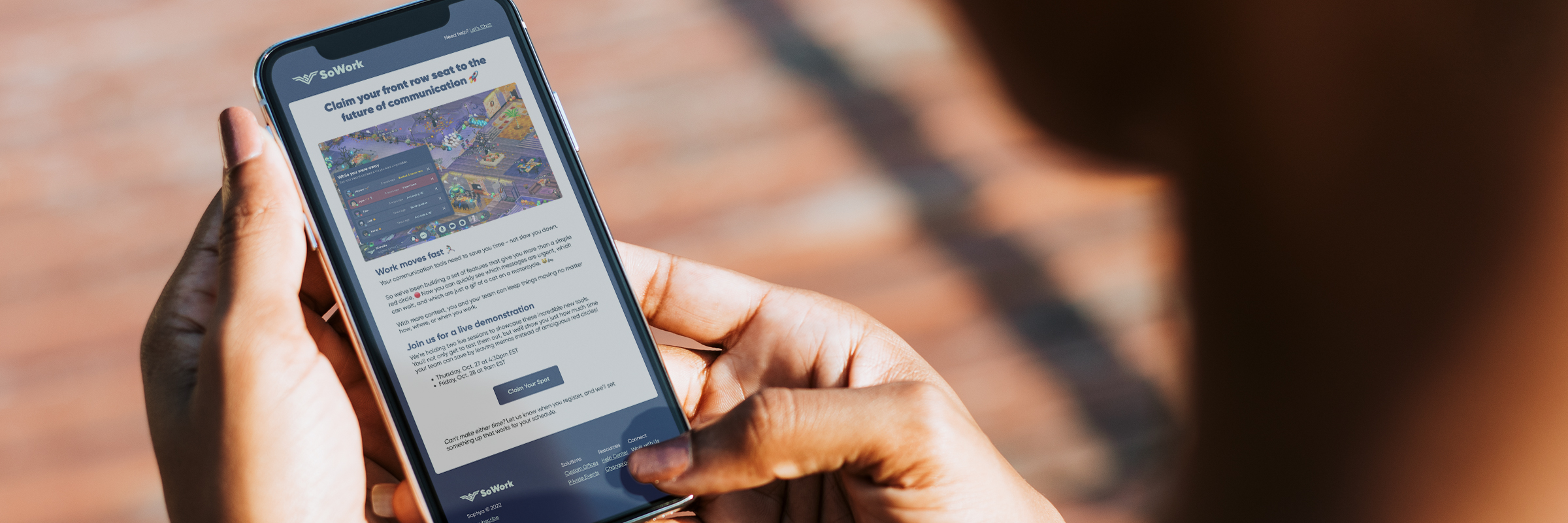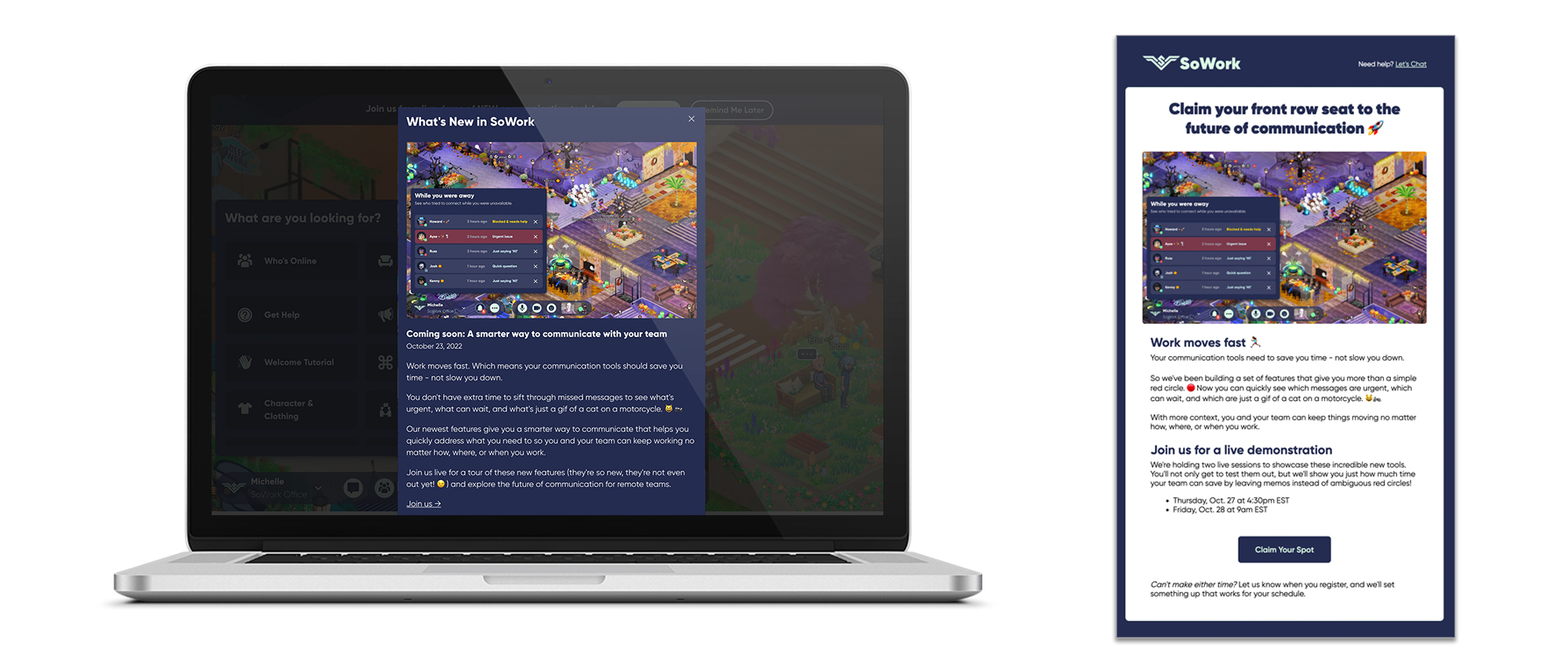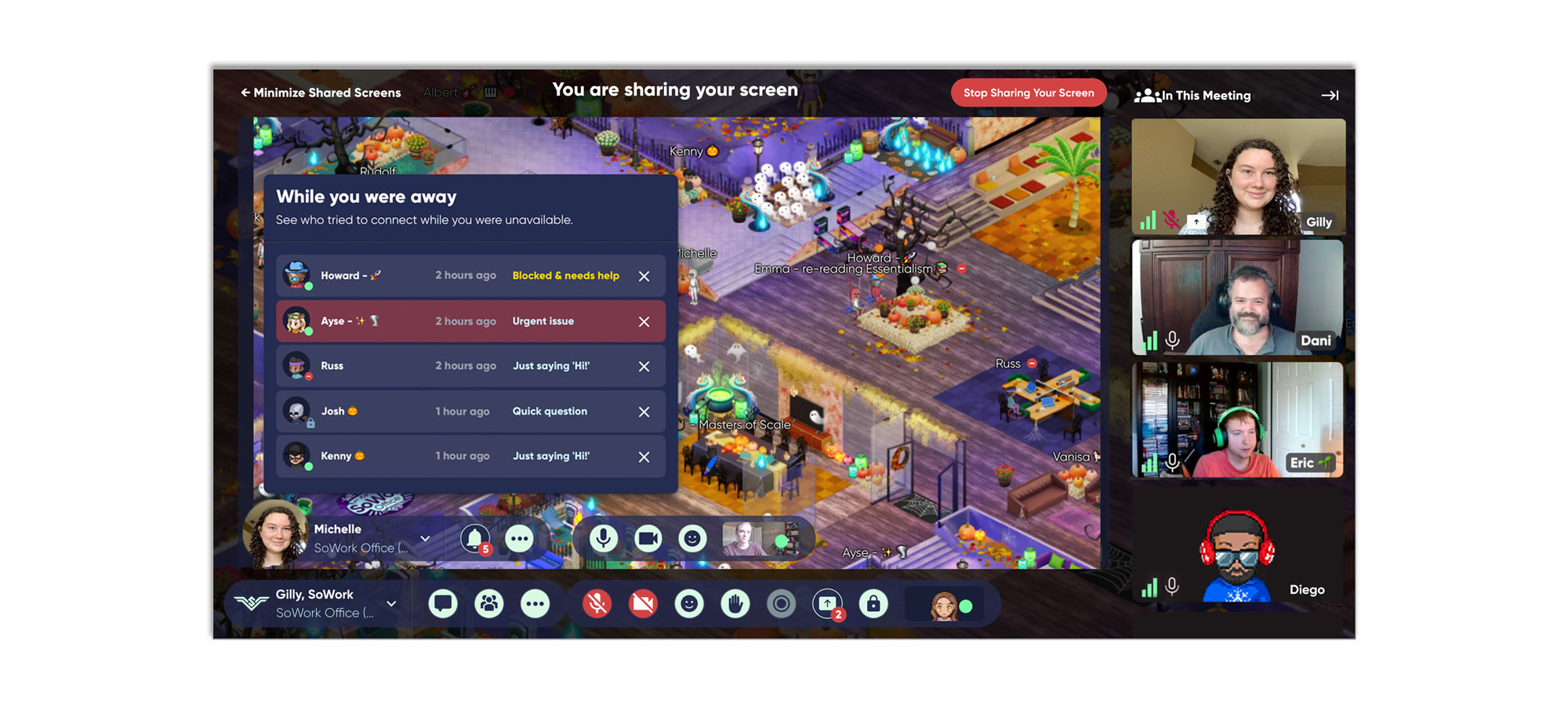 previous
next
previous
next 
Launch Strategy

Testing live webinars as a product launch strategy
Company: SoWork, B2B SaaS
Stage: Early stage, pre product-market fit
Responsibilities: Launch strategy, marketing and email campaign creation, event strategy, collaborating with Sales and Customer Support teams
Background
As SoWork was developing their product, they were releasing large, impactful features that unlocked immense value for their ideal customers. Given the magnitude of these releases, I was looking for ways to demonstrate the value of new features to potential customers and simultaneously use them as a way to convert these leads.
Why live events?
Given that SoWork was in a new market space, visually demonstrating the product with videos had been the most effective method of converting new customers. We didn't have the capacity to offer invidual live demos to leads, so I wanted to see if group demos might be an effective conversion method - specifically, to learn if they would be more effective than videos. We were about to launch a large set of new features, and it was the perfect opportunity to run a test.
Messaging research
As with all product and feature launches, I worked closely with the Product team to conduct initial interviews and review early data from our existing customers. This research led to messaging that would highlight the value our new features offered.

Marketing plan
Since SoWork was still early stage, I planned to promote the live event to existing customers in addition to leads. This would allow us to gain some signal from existing customers to determine if this type of strategy would be effective for activation and retention. With that in mind, I set up reporting to clearly track the status of all attendees so we could segment learnings accordingly.
We promoted the event through a variety of channels, including email, our website, in-app messaging, social media, and through Sales conversations.
Planning the event
Customer Support would host the actual event, so I worked with their team to script the demonstration, making sure we properly showcased the value based on our prior research.
I also partnered with the Sales team to make sure we had a plan in place to capture any leads that came through the event. We had Sales reps attend the event itself to help facilitate conversations in addition to being available in the space after the event. We also created a series of follow up emails for any leads we weren't able to converse with directly.

Results
In the end, we achieved a 45% attendance rate, which was strong signal that the event was appealing to the audience. But almost the entire 45% of actual attendees were existing customers. Our leads had an extremely low attendance rate, despite their strong registration numbers. Furthermore, the few leads who did attend the event did not engage. While existing users had their video cameras on and asked questions, leads mostly kept their videos off and didn't respond to any attempts to engage. And most importantly, they didn't convert into actual customers, even with follow up efforts and a free trial offer.
Additional learnings
After analyzing the results, we didn't see enough positive signal to invest in another iteration of the event for acquistion efforts. Instead, we decided that live events/demos were a great strategy for the activation of existing users given that we received overwhelmingly positive feedback - both qualitative and quantitative - from that audience. As such, the events would shift into customer success efforts for existing customers only.